Selection Installation FAQ Since before man learned to walk upright, he has been concerned about the weather. Weather observation through a weather station may actually precede Astronomy as the oldest science.
Since before man learned to walk upright, he has been concerned about the weather. Weather observation through a weather station may actually precede Astronomy as the oldest science.
Stone age man would have poked his nose out of the cave in the morning and realized from past observations that if there was a good deal of wind and dark clouds on the horizon, it was a good day to stay inside the cave and paint pictures on the wall. When agriculture was developed, introducing trade and the beginnings of urbanization, a trader would soon learn that “red sky in the morning” would mean it was not a good day to load his grain on a raft to float it to market.
Unless you spend your entire life indoors, connected to the Internet, the weather in your location has a profound influence on your daily existence. If you are able to detach from the Internet and actually go outside, you will find that knowing the weather conditions is vital to not only the success of whatever activity you choose to engage in, it will impact your health and safety. Speaking of health and safety, there are indoor applications for weather instruments that will help to measure the atmospheric conditions in your home, shop, office, or factory and how they affect the performance of the people inside.
The Atmosphere: It’s Everywhere
Weather takes place in the atmosphere, which is a very large place. It is influenced by the different rates at which the Sun heats the water in the ocean, the rocks of the continents, and how these bodies heat the air above them. These influences may be occurring hundreds or thousands of miles away from where you are living, working, and playing, but with modern technology and communications, we can get a pretty good idea of how they are going to affect the weather in our backyard. We know that an area of unseasonably warm ocean water off the coast will change our local rainfall patterns, or that the shift of a cold water current on the other side of the sea could bring major storms to our area in a few weeks.
A more immediate concern is what is happening right outside our window. There are any number of resources we can turn to in order to see regional conditions, from local TV and Radio news reports to Internet Weather services. The problem with these reports is that they are going to report Regional Conditions as opposed to what is going on in your own “micro-climate”.
![]()
- Knowing that it is raining at the airport is not the same thing as knowing how much is falling on your garden and how often you need to turn on your sprinkler. Knowing how hard the wind is blowing at the local TV station may not tell you whether it is safe to fly your remote control airplanes. Knowing the humidity, heat index, or wind chill at City Hall does not tell you whether you should put on a sweater or not for a walk around your neighborhood.
Selection
(To view/download the NOAA recommended guide on Choosing a Personal Weather Station CLICK HERE.)
Choosing Your Home Weather Station
There is an incredible variety of weather stations on the market, ranging from the most accurate and expensive instrumentation similar to those found at an International airport or University science department to the so-called “Weather Rock” (“If the rock is wet, it is raining”). Choosing a personal weather station for your home is a matter of balancing the information you need displayed, how easy the system is to install and operate, and how much you are willing to pay.
Gardeners, athletes, students, sportsmen and business people are all affected by the same weather, but the conditions they need to observe may not be the same.
Home systems fall into different categories. There are wireless as opposed to wired systems. Some systems mount all the sensors in a single unit, which is easy to mount (and potentially portable) while others use separate sensors so that each can be mounted where they will read most accurately.
Last update on 2025-06-20
Electronic Weather Instruments and What They Measure
Wind
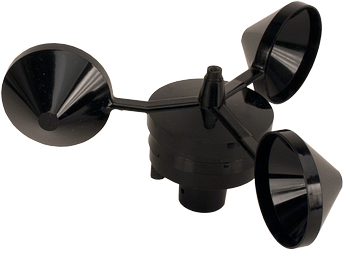 A wind sensor is a common reading in home weather stations. Most use a simple cup anemometer which has the advantage of sensing wind speed accurately from any direction and quickly responding to gusts. The propeller-type anemometer is highly accurate and compact, making it a natural choice for handhelds, but its accuracy depends upon keeping its axis aligned with wind direction.
A wind sensor is a common reading in home weather stations. Most use a simple cup anemometer which has the advantage of sensing wind speed accurately from any direction and quickly responding to gusts. The propeller-type anemometer is highly accurate and compact, making it a natural choice for handhelds, but its accuracy depends upon keeping its axis aligned with wind direction.
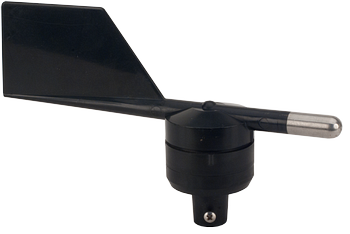 A wind vane will digitally indicate wind direction, but the unit’s base must be mounted and firmly held at true North. Most mounting instruction packets include information for converting magnetic North readings from a handheld compass to true North.
A wind vane will digitally indicate wind direction, but the unit’s base must be mounted and firmly held at true North. Most mounting instruction packets include information for converting magnetic North readings from a handheld compass to true North.
Rainfall
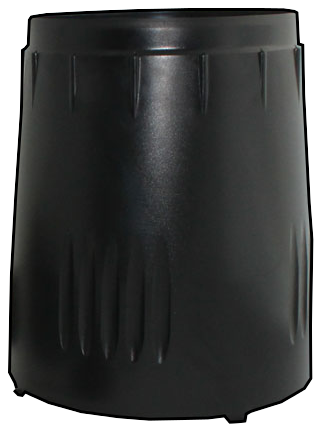 Gardeners, landscapers, and homeowners need to follow rainfall amounts. An analog rain gauge is a deceptively simple device; it is simply a straight-sided vessel with an open top. Periodically, the observer will record the depth of water in the vessel after a period of time, the results being inches of rainfall. When making the observation, he will also tip the accumulated water out of the gauge.
Gardeners, landscapers, and homeowners need to follow rainfall amounts. An analog rain gauge is a deceptively simple device; it is simply a straight-sided vessel with an open top. Periodically, the observer will record the depth of water in the vessel after a period of time, the results being inches of rainfall. When making the observation, he will also tip the accumulated water out of the gauge.
An automatic rain gauge measures the amount of rainfall as the rain is falling. The precipitation falls on a circular collection area with a funnel below. The outflow of the funnel is directed into a “self-emptying tipping bucket”. This device is essentially a teeter-totter with a water chamber on either side of the fulcrum. When the chamber on one side fills, the bucket tips and the chamber drains. At the same time, a switch is closed, and the sensor reads the frequency of the switch’s opening and closing. The most accurate tipping bucket systems have an 8-inch collection area and the bucket will tip with the weight of 0.01 inches of precipitation. Some lower resolution systems will not tip until 0.04 inches of precipitation falls.
Temperature and Humidity
 Temperature is measured using an electronic device called a thermistor, which is a resistor whose resistance depends upon temperature. As the temperature changes, so does the voltage of the thermistor circuit, and this is interpreted by the unit as a temperature reading.
Temperature is measured using an electronic device called a thermistor, which is a resistor whose resistance depends upon temperature. As the temperature changes, so does the voltage of the thermistor circuit, and this is interpreted by the unit as a temperature reading.
Relative humidity, or the percentage of moisture in the air, is measured by an electronic hygrometer. The heart of the device is a material whose conductive properties change as humidity increases or decreases. Relative humidity differs from absolute humidity in that the former is a measurement of how much moisture the air can hold at a certain temperature. At high relative humidity levels, water does not readily evaporate and increased moisture will result in precipitation.
Systems that have temperature and humidity indicators usually have software that will compute the heat index. This is a measure of supposed comfort in an environment. Since the human body regulates its internal temperature by sweating, and the evaporation of sweat is less effective during high humidity, times of high heat and low humidity can be more comfortable and lower on the heat index than periods of high humidity even though the actual temperature is lower.
Another software application that uses readings from two different sensors is wind-chill. Since the transfer of heat away from the body occurs more readily in moving air, the greater the wind during periods of cold, the colder it will feel.
Data Logging
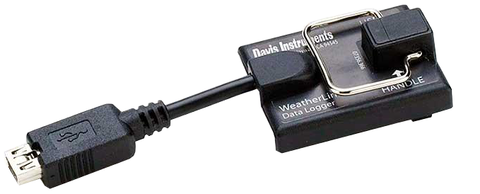 Along with software-based measurements, data logging is an important feature in a weather station. Simple handheld wind gauges often forgo data logging, but more fully-featured models often retain a significant amount of data for later recording, and some can even attach to a computer or smartphone to download readings.
Along with software-based measurements, data logging is an important feature in a weather station. Simple handheld wind gauges often forgo data logging, but more fully-featured models often retain a significant amount of data for later recording, and some can even attach to a computer or smartphone to download readings.
Some home weather stations are designed to connect with a PC or laptop and incorporate a Windows-based interface. Some stations have a permanent base station which both displays and stores data from the sensors. Usually, the base station will also interface with a computer via USB or Wifi.
Many weather hobbyists enjoy connecting their personal weather station to a Personal Weather Station Network like Weather Underground (http://www.wunderground.com/personal-weather-station/signup.asp).
Not only does being part of the network contribute more data points for more accurate climate observation and forecasting, being able to compare data with nearby stations gives an indication of how accurately an individual station is working.
Installation
(To view/download the NOAA recommended guide on Installing a Personal Weather Station click here.)
Selecting a home weather station and learning about the different sensors can be exciting and fun, but deciding where and how to install the station is even more important to get the most out of it.
It is kind of like buying a sports car. It would be great to go out and buy a Lamborghini, but if the only place you can drive it is on crowded city streets, it is a lot less fun.
A sports car needs to be out on the open road, and a personal weather station needs to be out in the weather. Of course, there is more to sitting in your weather station than just putting it outside and turning it on.
Getting the best results will take some consideration and probably some compromise, but when you get it right, you will ensure years of trouble-free and accurate service.
Ideal Installation
Launching and landing commercial airliners which are carrying hundreds of people requires an intimate knowledge of local weather conditions, so airport operators put a lot of thought into how they install their weather sensors. However, the average home or business owner probably has fewer options than the airport has.
Last update on 2025-06-20
The National Weather Service recommends that temperature/humidity sensors be placed between 4’1” and 6’7” above the ground, a horizontal distance twice the height of the nearest object (twelve feet away from a six foot fence), and not in direct sunlight but in the open air.
An anemometer will ideally be mounted ten meters (32.8 feet) above the ground and a horizontal distance four times the height away from the nearest obstruction. The rain gauge will get its most accurate data if it is four to six feet off the ground and a horizontal distance four times the height away from the nearest obstruction.
Mounting all of the instruments on a single pole with each sensor at the proper height is often the best solution. Just keep in mind that the pole must be sturdy enough to support the weight of the anemometer in heavy winds. The use of guy wires is preferable to seeing your expensive weather station come crashing to the ground.
Installation in the Real World
At the airport, there is plenty of room to meet all of these conditions without getting in anyone’s way. In town, it may not be so simple, especially if you need to consider restrictions placed by a homeowners association or even the reality of a small yard.
The design of the station itself may place some restrictions on your installation. There is no way to place the rain gauge a few feet off the ground and the wind gauge five times higher with an “all in one” weather station. However, from an engineering standpoint, such a design is incredibly simple to install, just find a pole that meets the manufacturer’s recommendations and you are good to go.
Getting the data from outside at the sensors to the base station inside also needs to be taken into consideration. Most wireless stations are rated with a “line of sight” transmission distance, but building construction and electromagnetic interference may reduce the radio transmitter’s range.
A wired station is less vulnerable to interference so long as the wire is protected from damage.
Stations with separate sensors often use wires to connect the sensors to a central power or sending unit. Some systems have a solar charging option to keep the batteries fresh or they may incorporate an external power source. Other designs use internal batteries which must be refreshed occasionally.
Although there are many factors to be considered for installation of your weather station, most manufacturers have useful recommendations in the installation instructions.
Many companies will have a helpline that will provide installation advice over the telephone or online. The National Weather Service also provides some useful guidelines.
1. How Does WeatherStationary Select The Weather Stations It Sells?
We are located in Wyoming, where the Great Plains and the Rocky Mountains come together, so we are no strangers to extreme weather. We are also in a position to enjoy some of the best outdoor recreation opportunities anywhere, so long as the weather cooperates!
We select our weather stations and instruments based on several factors, but they generally boil down to one thing: providing our customers with the best value for the money. One of the first things we look at is how easy the system is to install and use. A rugged, easy-to-install unit will provide better service and results than a more sensitive system that requires more adjustment.
Even if a system seems simple to install and use, we feel that it is important for the manufacturer to have a reliable support network in place. All of the companies we work with provide easy-to-understand user manuals, and they go the extra mile with a well-staffed helpline. Keep in mind that the sensors in your weather station are sensitive electronic instruments. The call center staff has “heard it all” and will be a huge help to answer your questions and troubleshoot any problems you have during installation.
Finally, there is the money factor. We have selected the weather stations that allow us to give the best price to our customers. Naturally, you get what you pay for, but we know that everyone appreciates a good deal!
2. What Do I Do If There Is No Data Or Faulty Data Displayed On My Console?
Refer to the literature provided with your station for specific troubleshooting guidance, but a few general guidelines apply to most weather stations. If all of the data is displayed on the console screen but is much higher or lower than expected, a common problem is the unit set, which may be in metric or imperial units. Set the units to those most appropriate to users observing your station.
If all of the data points on the console are either blank or fully black, reboot the console. This is usually accomplished by removing any backup batteries and disconnecting the AC adapter for 10-20 seconds. The console will begin a reboot cycle when power is restored.
If the console displays partial data, there may be a problem with the sensors or the transmitter(s). Before getting on the ladder, go ahead and reboot the console, if this does not correct the fault, check the power for the faulty sensor and its associated transmitter. Note: If more than one sensor uses a common transmitter but there is a faulty reading from only one, the fault is likely in the sensor rather than the transmitter.
3. Will The Mounting Pole Affect Wind Direction Readings?
Most units are designed with the wind vane and anemometer mounted at the top so that it will always be in free-moving air. There are weather station designs that place the vane and anemometer below the sensor housing, but wind tunnel testing has shown that interference from the mounting pole does not affect the wind readings, so long as the unit has been mounted in accordance with the manufacturer’s instructions.
4. How Can I Share The Data From My Weather Station WithOthersIn My Area?
Systems from Davis Instruments are designed so that the Integrated Sensor Suite is the only transmitter in the system, but the signal may be received by any number of compatible consoles. A single ISS installed on the highest building of campus could provide weather data to several different labs and offices.
Weather data can also be shared via the Internet, as long as the owner/operator of the station chooses to connect with the ‘net. If the software bundled with your station does not allow for Internet sharing there are aftermarket software outlets for all of the popular weather stations. WiFi-enabled receivers to allow station data to be uploaded to the Internet without turning on your primary PC.
Station operators may choose to share their data via a Personal Weather Station Network like Weather Underground. By reading the data from nearby weather enthusiasts, the data from their local station becomes more meaningful, predictions become more accurate, and it is simple to verify that your own station is performing accurately. However, the data from the network will never be as accurate for your local micro-climate as the data from your own station.
5. What Tools Will I Need To Install My Weather Station?
Different models will have different installation parameters, but they are generally designed to be “plug and play” and installation is well with the reach of a home handyman. An adjustable wrench and screwdriver are all that are needed to mount the sensors to the mounting pole. Attaching the pole to a structure or post may require heavier tools and hardware, but it is no more difficult than mounting a television antenna.
One required special tool is a compass or local map to align the wind vane with true North. Keep in mind that uncompensated hand-held compasses will point to magnetic North rather than true North. If the declination is not figured in there will be a permanent error in your wind direction readings (although it will be a consistent error in all directions). Declination data can be found on USGS topographical maps or by looking it up at http://www.magnetic-declination.com/.
6. The Wind Is Gusting But The Wind-Chill Reading On My Console Does Not Change. Why?
The wind chill is a calculated data point rather than a measured one. The formula for figuring wind-chill is based on air temperature and wind speed, but since it is an indication of how cold the environment feels, most systems use average wind speed rather than current wind speed. Therefore, if the wind increases for a few seconds, the wind chill will not drop right away.
7. The Transmission Range Of My Weather Station Is 1000’ (300m). Can I Really Mount The Unit That Far Away From My House?
Transmission ranges are generally listed as “line of sight”, which allows for some wiggle room in radio ranges. When we say “line if sight”, it means that if the transmitter at the sensor suite is sitting in the open air, and the receiver in the console is also sitting in the open air with nothing between the two, then data will be transferred even if the units are 1000’ apart. Note that “line of sight” is not the same as “ideal conditions”, there are several examples of low-powered transmitters and receivers getting a signal through for miles. However, in the real world of your backyard, there may be trees, power lines, metal buildings, and walls between the transmitter and receiver, any and all of which may reduce the transmission range.
Most wireless weather station manufacturers offer radio repeaters that will boost a low signal to give it a longer range. The repeater will be tuned to each manufacturer’s units and may be used to extend the range up to several miles.
08. I Know That It Has Been Raining But My Rainfall Gauge Does Not Indicate Any Precipitation Or Gives A Lower Than Expected Indication. What Should I do?
The tipping bucket rain gauge is an ingeniously simple and reliable instrument with very little that can actually go wrong. Quite often, lower than expected readings occur simply because Mother Nature does not always spread rainfall evenly over a small area. This is particularly noticeable during short cloud bursts. How often does a friend across town call and complain about forgetting her umbrella while it is sunny and clear at your house?
One way to verify that your rainfall gauge is working is to slowly pour a measured amount of water through the device, about 100ml over a period of 5 minutes. If the water flows too fast, most of it will spill out without tipping the bucket, but a slow pour should yield a measurable result.
 Rain gauge funnels also seem to attract wildlife. Birds and insects have been known to nest in rain gauge funnels, or debris may block the funnel screen. If birds roosting in your rain gauge becomes a problem, you may consider installing bird spikes which will keep birds from landing on your gauge without interfering with raindrops being collected.
Rain gauge funnels also seem to attract wildlife. Birds and insects have been known to nest in rain gauge funnels, or debris may block the funnel screen. If birds roosting in your rain gauge becomes a problem, you may consider installing bird spikes which will keep birds from landing on your gauge without interfering with raindrops being collected.
9. What If I Am Not Getting A Rainfall Reading And I Just Installed The System?
You may be able to remove the cover and funnel from the rain gauge by gently pulling the cover off (be careful not to pull the whole rain gauge off of the weather station). Inspect that there is no debris or damage preventing the tipping mechanism from working. Manually tip the mechanism with your fingers. A slight clicking should be heard as the counter engages. If the manual tips do not register on your display console, there may be failed switch or wiring defect. Contact the customer service number for your device’s manufacturer. In most cases, the rain gauge is easily replaced in the field and will require no calibration.
10. The Air Temperature Reading From My Station Is Much Higher Than The Old Dial Thermometer I Have Had In The Yard For Years. What Is Happening?
False high-temperature readings are common in roof-mounted installations, even when the manufacturer’s instructions are followed. Most will specify that the unit is to be mounted several feet above the surface of a roof, or above a paved surface. Since these materials absorb a lot of solar energy which radiated and heat. Generally, the air temperature sensor is mounted far enough above the radiation source (the roof or pavement) that air movement (wind) will normally correct the reading. However, during periods of low or no wind, surface radiation may heat the air immediately around the sensor to the point that it appears to be a false reading. If raising the sensor mounting higher is not practical, consider placing a lighter-colored material immediately under the sensor. This will cause the surface to reflect rather than absorb solar radiation. If neither of these steps is acceptable, the only option is to find an alternate mounting location or accept that the air temperature reading will be high during low wind conditions.
11. The Barometric Pressure Displayed On My Console Is Obviously Too High Or Too Low. What Will Cause This?
The electronic pressure gauge which acts as the barometer in your weather station is a rather simple and reliable device. It is made up of a force collector and a strain gauge. The Strain gauge measures the change in electrical resistance of a metal or semiconductor as mechanical force is applied to it. These are calibrated at the factory and generally not user adjustable.
However, erroneous readings are often the result of installers forgetting to input the altitude or making the input in feet rather than meters.
Keep in mind that barometric trends are often more useful than the actual numerical reading. If pressure is higher than it was an hour ago, the weather is likely clearing. If the pressure is steady, the same weather conditions will continue, and a falling barometer indicates that a storm may be approaching. If the barometer falls rapidly, the storm may be a violent one!
12. How Does My Weather Station Generate A Weather Prediction? Is There Any Way To Generate A More Detailed And Reliable Prediction Than The Standard Icons?
Sometimes what is happening with the weather now will not be as important to you as what the weather will be doing in the near future. If your display console displays a weather prediction, the unit generates that prediction based on an algorithm that uses current weather condition factors as well as some past data. Each manufacturer will use its own algorithm, which is based mostly on barometric pressure trends. For years, sailors at sea were able to make reliable predictions based on their ship’s barometer and the conditions they saw around them. More sophisticated algorithms will take other weather conditions into consideration, but barometric pressure is usually the most closely tracked trend.
Your local TV station or favorite weather website may provide a more detailed forecast than the simple “Sunny”, “Cloudy”, “Partly Cloudy”, “Rainy” or “Snowy” icon displayed on your personal console. Although these outlets use an algorithm that is rather similar to that used by your personal weather station, they have the advantage of a much larger data set, including readings from hundreds of weather stations just like yours, pulse-Doppler radar, radiosonde data, and some of the most sophisticated computers on the planet.
It pays to follow the predictions from commercial and government sources to compare with your personal forecast. In the end, whether it is from the biggest computers at the NOAA or a Boy Scout reciting “Red Sky At Morning…” on a camping trip, any forecast is simply a guess based on past observations and the available data. The more you observe the weather with your station, the better you will become at anticipating environmental conditions for your location.
You can also check our latest review on Netatmo Weather Station.

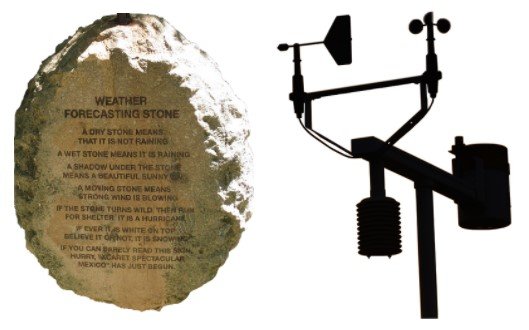


Trackbacks/Pingbacks